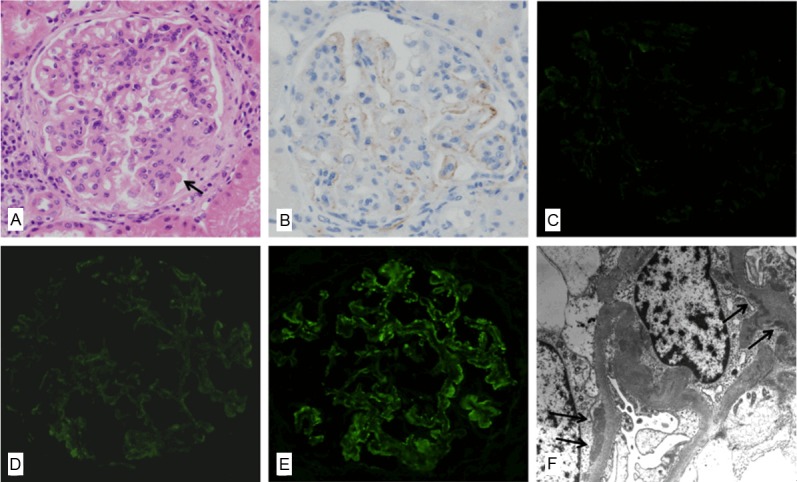Figure 1.

A representative renal biopsy specimen showing activation of the lectin pathway in lupus nephritis (case No. 9). A: Light microscopy in class IV diffuse LN shows increased mesangial cellularity with focally lobular accentuation, hyaline thrombi (arrow) and a few areas of glomerular leukocytic infiltration (hematoxylin and eosin, x 400). B: Mild glomerular C4d staining in the same case is observed along the glomerular capillary loops, represented by +1 (anti-C4d, x 400). C: No C1q deposition in the same case is observed in the glomerulus (anti-C1q immunofluorescence, x 400). D: Immunofluorescence microscopy in the same case reveals trace staining of C3 in the peripheral capillary walls (anti-C3 immunofluorescence, x 400). E: Immunofluorescence microscopy in the same case reveals a weak and granular pattern of IgG deposition in the peripheral capillary walls (anti-IgG immunofluorescence, x 400). F: Electron microscopy in the same case reveals subendothelial deposits (arrow) with effacement of foot processes (transmission electron microscopy, x 8,000).
